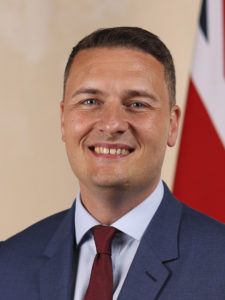
On 3rd July 2025, Health Secretary Wes Streeting and PM Sir Keir Starmer, revealed their 10 Year Health Plan for the NHS in England.
Healthcare is devolved in the UK. So the plan does not apply for Scotland, Wales and Northern Ireland.
After months of leaks and speculation, the plan sets out a new path to addressing the NHS’ biggest challenges: long waiting lists, increasing demand, stretched workforce capacity and health inequalities.
The plan focuses on eight key areas:
- Delivering care closer to home – a new Neighbourhood Health Service (‘NHS’)
- Embracing digital and AI to improve efficiency and outcomes
- Empowering people to make healthy choices – e.g. with a focus on obesity and alcohol use
- A new operating model for the NHS – reversing block contracts, re-launching the Foundation Trust concept and bringing back Public-Private Partnerships (PPPs; for building new hospitals). These were Alan Milburn’s flagship policies at the start of the Blair-Brown Labour governments. He is now back at DHSC as Wes Streeting’s right-hand man
- An enhanced focus on transparency and quality – to make the NHS more open and honest about mistakes
- A workforce that is fit for the future – with employing more UK-trained doctors
- Supporting innovation to power transformation
- A new value-based approach to funding – using patient feedback to decide funding of hospital care.
MyHSN’s 5 big concerns
Many of the principles of the 10 Year Health Plan are laudable, and there are some innovative ideas. But it skirts around 5 of the biggest problems of the NHS (below).
And none of the big three objectives – Local Care (Neighbourhood Health Service are really polyclinics), Better IT and Prevention – are new, i.e. show any real imagination. For example, they are all in the previous 2019 NHS 10 year plan (and NHS plans before that).
1. Social care. There is no plan for health and social care to merge, making it incredibly difficult for hospitals to discharge frail elderly patients into their homes or nursing/residential homes
2. Elective care (e.g. operations, like hip replacements and cataracts), cancer and A&E corridor care. There are no targets to deal with the current 7.4 million people waiting for operations or procedures. This is a staggering 10% of the population. Ditto for cancer and jammed A&Es. This is particularly worrying

3. No ‘tension’ or true competition in the system, whereby NHS staff know if they work harder (become ‘more productive’) there will be rewards
4. Central control. With the reduction in ICBs (currently 42, to about 15?), NHS England disappearing and a London-based DHSC, central control will be augmented. This is a power grab. There is going to be no local level of administration, responding to local needs
5. 1948 NHS Monday-Friday ‘free’ model remains
-
- With separate GP, hospitals and community care (the original ‘tripartite model’), each largely working 5 days a week
- Hospital consultants are still be able to ‘game the NHS’ and do private practice on NHS time
- GPs are still small businesses that are quasi-independent of the NHS and are not performance managed against any target
- The NHS uses 10-11% of your taxes but constantly wants more money – with empty GP and hospital clinics, and operating theatres, from Friday lunchtime to Monday morning. They will continue to be like the Marie Celeste
- An apparently free model (that no other country has copied; this is an alternative) is not appropriate for the modern age – where a 7 day NHS is a bare minimum requirement. Amazon and Google do it.
Lord Darzi’s recommendations
The plan is a response to Lord Darzi’s review of the NHS (in September 2024) and focuses on a number of key areas including these three shifts, as identified as necessary by Lord Darzi.
From Hospital to Community: A Neighbourhood Health Service (new ‘NHS’)
- The Plan sets out a significant shift in where care is delivered. Hospitals will continue to play a vital role. But areas such as long-term condition management, diagnostics, and urgent care will move into community settings
- Neighbourhood health teams and local diagnostic hubs will play a bigger role with Integrated Care Boards’ (ICBs) commissioning more joined-up services across health and social care.
Analogue to Digital: Power in Your Hands
- Technology is at the centre of the Plan. Together with a new Single Patient Record (SPR) the NHS App will become a ‘digital front door’ for care, including new AI-driven tools (eg ‘My NHS GP’, ‘My Consult’ and others)
- AI will used for diagnostics and early-warning safety systems and the use of robotic surgery will be increased. New technology will be fast-tracked using an ‘Innovator Passport’ to reduce delays and duplication.
Sickness to Prevention: Power to Make the Healthy Choice
- The NHS will make a decisive move toward prevention; focusing on earlier diagnosis, wider screening programmes, and stronger public health initiatives – with the aim of keeping people healthier for longer, and relieving pressure on hospitals
- Prevention will no longer be a ‘nice to have’, it will be a core measure of NHS performance
- But. There is limited evidence preventive medicine works. Some consider it actually overdiagnosis and overtreatment. The concept encourages doctors to look too closely for disease; with unnecessary screening, including tests looking for ‘pre-diseases’ (e.g. ‘pre-diabetes’ and ‘pre-hypertension‘), and MRIs and CT scans – turning healthy people into diseased anxious patients, by revealing often harmless abnormalities
- Even if prevention does work (a little), it may produce more frail old people dying slowly of dementia and cancer that cost more and we cannot discharge from hospital.
Summary
Essentially, Streeting-Starmer’s 10 Year NHS Health Plan is a ‘no change’ 1948 NHS model (plus a bit of AI) that suits doctors. This NHS model once worked, but now fails the people of the UK on a daily basis. It seems we have decided to stick with it.

